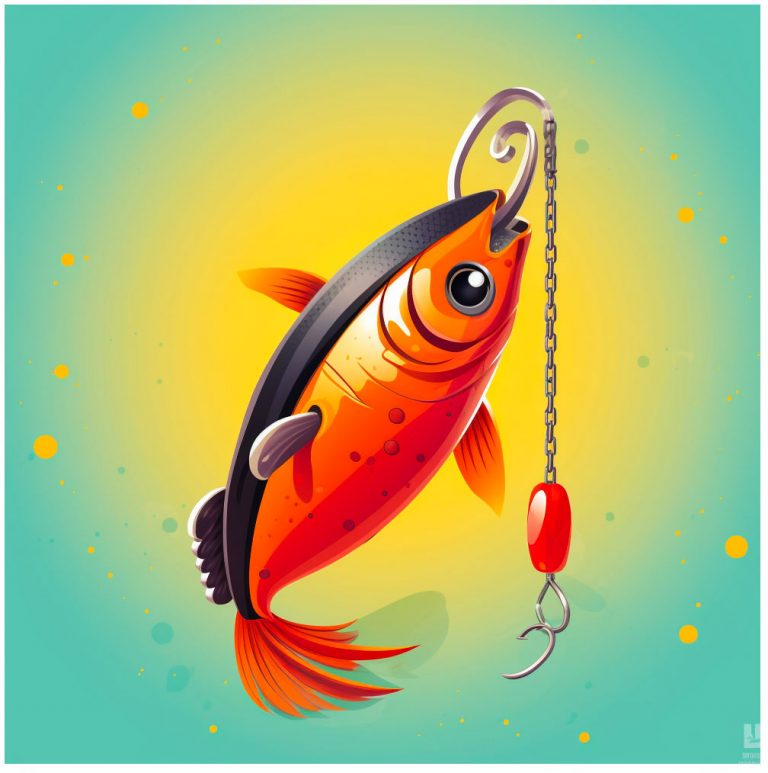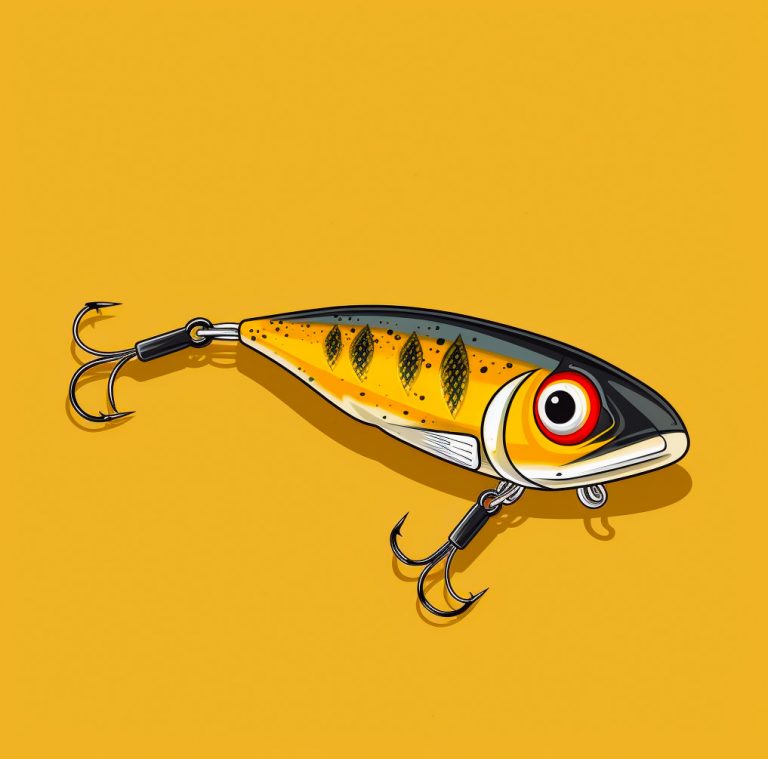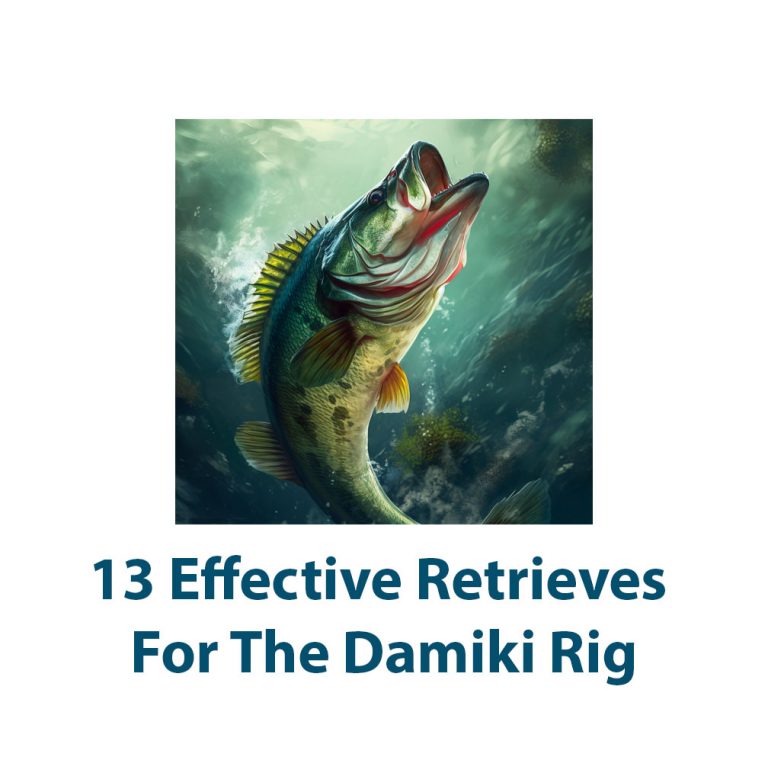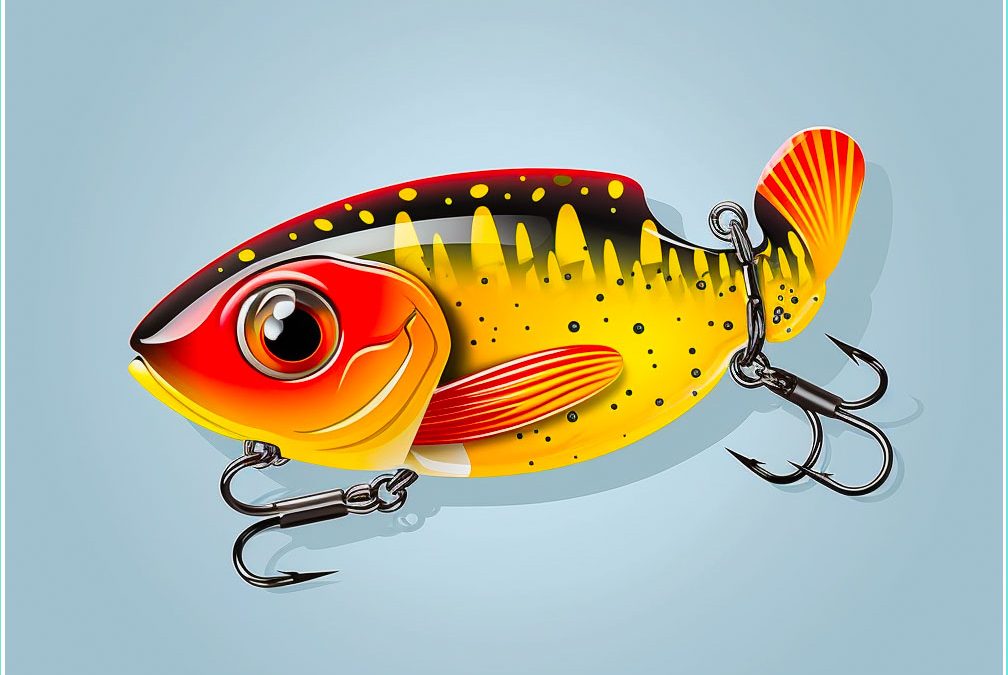Introduction:
Lipless crankbaits are a popular type of fishing lure that is versatile and effective in catching a variety of fish species. This article will explore the top 17 lipless crankbait techniques, complete with explanations for each technique, tips for success, and when to use each technique to get the best results.
Benefits of Using Lipless Crank Bait:
There are many benefits to using a lipless crank bait for fishing, including its versatility, effectiveness, and simplicity. Lipless crankbaits can mimic the movements of baitfish, and they come in a variety of sizes and colors, making them ideal for a range of fishing situations.
Purpose of the Article:
The purpose of this article is to provide readers with a comprehensive overview of the top 17 lipless crankbait techniques. By understanding these techniques, readers will be better equipped to catch more fish and improve their overall fishing skills and knowledge.
Technique 1: Yo-Yo Technique:
The Yo-Yo technique involves casting the lipless crankbait out and letting it sink to the bottom, then quickly reeling it back up and letting it fall again, repeating the process several times. This technique is best used in deep water in the spring and fall.
Tips for Success:
-Use a heavy baitcasting rod for the best control and accuracy.
-Experiment with different retrieval speeds and depths until you find what works best for the current fishing conditions.
-Be patient and allow the lure to sink completely before reeling it in again.
Technique 2: Lift and Drop:
The lift and drop technique involves lifting the lipless crankbait off the bottom and letting it fall back down before repeating the process. This technique is ideal for fishing in shallow water or around weed beds.
Tips for Success:
-Use a light rod with a sensitive tip to detect bites.
-Experiment with different lifting heights and speeds to find what works best for the current fishing conditions.
-Pay close attention to your line for any signs of movement or tension, indicating a potential bite.
Technique 3: Steady Retrieve:
The steady retrieve technique involves reeling the lipless crankbait in slowly and steadily, mimicking the movements of a swimming baitfish. This technique is ideal for fishing in open water or around structures.
Tips for Success:
-Use a medium-action rod with a spinning reel for the best control and accuracy.
-Experiment with different retrieval speeds to find what works best for the current fishing conditions.
-Pay close attention to any sudden changes in the tension of your line, indicating a potential bite.
Technique 4: Rip and Stop:
The rip and stop technique involves jerking the lipless crankbait up and then letting it fall back down before repeating the process. This technique is ideal for fishing in deep water or around structures.
Tips for Success:
-Use a heavy baitcasting rod for the best control and accuracy.
-Be patient and allow the lure to sink completely before jerking it up again.
-Experiment with different jerking heights and speeds to find what works best for the current fishing conditions.
Technique 5: Reel and Pause:
The reel and pause technique involves reeling the lipless crankbait in slowly and then pausing for a few seconds before repeating the process. This technique is ideal for fishing in open water or around structures.
Tips for Success:
-Use a medium-action rod with a spinning reel for the best control and accuracy.
-Experiment with different retrieval speeds and pause lengths to find what works best for the current fishing conditions.
-Pay close attention to any sudden changes in the tension of your line, indicating a potential bite.
Technique 6: Crank and Burn:
The crank and burn technique involves reeling the lipless crankbait in quickly and steadily, creating a fast and erratic movement through the water. This technique is ideal for fishing in open water or around structures.
Tips for Success:
-Use a heavy baitcasting rod for the best control and accuracy.
-Experiment with different retrieval speeds to find what works best for the current fishing conditions.
-Be prepared for sudden strikes and be ready to set the hook quickly.
Technique 7: Jerk and Pause:
The jerk and pause technique involves jerking the lipless crankbait up and then pausing for a few seconds before repeating the process. This technique is ideal for fishing in deep water or around structures.
Tips for Success:
-Use a medium to heavy baitcasting rod for the best control and accuracy.
-Experiment with different jerking heights and speeds to find what works best for the current fishing conditions.
-Be patient and allow the lure to sink completely before jerking it up again.
Technique 8: Wake Technique:
The wake technique involves reeling the lipless crankbait in slowly on the surface of the water, creating a wake behind it. This technique is ideal for fishing in open water or around structures.
Tips for Success:
-Use a light or medium-action rod with a spinning reel for the best control and accuracy.
-Experiment with different retrieval speeds to find what works best for the current fishing conditions.
-Be prepared for sudden strikes and be ready to set the hook quickly.
Technique 9: Double Hookup:
The double hookup technique involves using two lipless crankbaits tied to your line at different depths, creating a more enticing and varied presentation. This technique is ideal for fishing in open water or around structures.
Tips for Success:
-Use a heavy baitcasting rod for the best control and accuracy.
-Experiment with different depths and lure configurations to find what works best for the current fishing conditions.
-Be prepared for double strikes and be ready to set the hook on both lures quickly.
Technique 10: Bottom Bouncing:
The bottom bouncing technique involves casting the lipless crankbait out and letting it sink to the bottom, then jerking it up and letting it fall back down, repeating the process several times. This technique is ideal for fishing in deep water or around structures.
Tips for Success:
-Use a heavy baitcasting rod for the best control and accuracy.
-Experiment with different retrieval speeds and depths to find what works best for the current fishing conditions.
-Be patient and allow the lure to sink completely before jerking it up again.
Technique 11: Slow Rolling:
The slow rolling technique involves reeling the lipless crankbait in slowly and steadily just above the bottom, mimicking the movements of a crawfish or other bottom-dwelling creature. This technique is ideal for fishing in deep water or around structures.
Tips for Success:
-Use a medium to heavy baitcasting rod for the best control and accuracy.
-Experiment with different retrieval speeds to find what works best for the current fishing conditions.
-Pay close attention to any sudden changes in the tension of your line, indicating a potential bite.
Technique 12: Trolling:
The trolling technique involves casting the lipless crankbait out and slowly trolling it behind your boat, covering a wide area of water. This technique is ideal for fishing in open water.
Tips for Success:
-Use a medium to heavy baitcasting rod and a trolling motor for the best control and accuracy.
-Experiment with different trolling speeds and depths to find what works best for the current fishing conditions.
-Pay close attention to any sudden changes in the tension of your line, indicating a potential bite.
Technique 13: Jigging:
The jigging technique involves dropping the lipless crankbait down to the bottom and then jerking it up repeatedly, mimicking the movements of a wounded baitfish. This technique is ideal for fishing in deep water or around structures.
Tips for Success:
-Use a heavy baitcasting rod for the best control and accuracy.
-Experiment with different jerking heights and speeds to find what works best for the current fishing conditions.
-Be patient and allow the lure to sink completely before jerking it up again.
Technique 14: Surface Buzzing:
The surface buzzing technique involves reeling the lipless crankbait in quickly on the surface of the water, creating a loud buzzing noise that attracts fish. This technique is ideal for fishing in open water or around structures.
Tips for Success:
-Use a light to medium-action rod with a high-speed spinning reel for the best control and accuracy.
-Experiment with different retrieval speeds to find what works best for the current fishing conditions.
-Be prepared for sudden strikes and be ready to set the hook quickly.
Technique 15: Fast Retrieve with Lift and Drop:
The fast retrieve with lift and drop technique involves reeling the lipless crankbait in quickly and jerking it up and down, creating a fast and erratic movement through the water. This technique is ideal for fishing in open water or around structures.
Tips for Success:
-Use a heavy baitcasting rod for the best control and accuracy.
-Experiment with different retrieval speeds and jerking heights to find what works best for the current fishing conditions.
-Be prepared for sudden strikes and be ready to set the hook quickly.
Technique 16: Ticking the Tops of Grass Mats:
The ticking the tops of grass mats technique involves casting the lipless crankbait onto the tops of submerged grass mats and rapidly reeling it in, trying to keep it on top of the grass without getting it tangled. This technique is ideal for fishing in weedy areas.
Tips for Success:
-Use a light to medium-action rod with a high-speed spinning reel for the best control and accuracy.
-Experiment with different retrieval speeds and depths to find what works best for the current fishing conditions.
-Be patient and be prepared to cast repeatedly to cover a wide area of the grass mat.
Technique 17: Ripping through Milfoil:
The ripping through milfoil technique involves casting the lipless crankbait into a thick milfoil bed and jerking it up quickly, ripping it through the grass and creating a commotion that attracts fish. This technique is ideal for fishing in weedy areas.
Tips for Success:
-Use a medium to heavy baitcasting rod for the best control and accuracy.
-Experiment with different jerking heights and speeds to find what works best for the current fishing conditions.
-Be patient and be prepared to cast repeatedly to cover a wide area of the milfoil.
Conclusion:
By mastering these top 17 lipless crankbait techniques, anglers can improve their chances of catching a variety of fish species in a range of fishing conditions. Remember to practice each technique and be patient, and you’ll be well on your way to becoming an expert lipless crankbait angler.

Fishing Carolina Rigs For Bass: The Highly Effective Ball And Chain
This article is going to cover fishing Carolina rigs for bass. Fishing is a beloved activity that people all around the world enjoy. However, there’s always a way to improve upon the experience. One of the ways is to use Carolina rigs when you’re fishing for bass. Carolina rigs are a fantastic way to catch […]

Catch Bass In Every Season With Neko Rigs
Introduction I’ve been an avid bass fisherman for years, but it wasn’t until I started using the Neko Rig that I truly started catching bass in every season. Whether it’s winter, pre-spawn, spawn, post-spawn, summer or fall, the Neko Rig has proven to be a highly effective tool for catching bass. In this article, I’m […]

Jerkbaits in Every Season For Bass
Hey there, my fellow fishing enthusiasts! Are you tired of using the same old baits all year round? Well, today we’re going to talk about something that will spice up your fishing game – jerkbaits! And not just any jerkbaits, but jerkbaits that you can use in every season for bass fishing. I know, I […]

Megabass Dark Sleeper Swimbaits For Bass
Introduction As an avid bass fisherman, I’m constantly on the lookout for new gear and tools to improve my chances of catching bigger and better bass. Recently, I came across the Megabass Dark Sleeper Swimbaits, and my curiosity was piqued. What makes these swimbaits so special? Do they really live up to their reputation among […]

Keitech Swing Impact Swimbaits for Bass
Introduction Hey there anglers! If you’re in the market for some new swimbaits for bass fishing, I highly recommend checking out Keitech Swing Impact Swimbaits. They’re a favorite among many fishermen, including myself, and for good reason. In this article, we’ll dive into the science behind these lures, the different types available, techniques for using […]

Guide For 13 Effective Retrieves For The Damiki Rig
As a fishing enthusiast, I have always been amazed at how the right retrieve can make all the difference in the world when it comes to catching fish. Recently, I have been experimenting with the Damiki rig and have been blown away by its effectiveness. However, with so many different retrieves to choose from, it […]

